Wondering what type of water filter you need? We’ve shared all the most popular types of water filters, and what they do, to help you choose the right filter for you based on your budget and contaminant removal requirements.
Use our quiz to easily find the best type of water filter for your needs!
📌 Key Takeaways:
- The type of water filter you need depends on your water quality and contaminants present
- Every water situation is unique, there is no one size fits all filter
- There are around 9 types of popular water filters available today, including carbon filters, reverse osmosis filters, water distillers, ion exchange filters, ceramic filters, polishing filters, mineral filters, and KDF filters.
- These filters may be installed as point-of-use filters (like under-sink, countertop, faucet, showerhead, and pitcher filters), or point-of-entry filters (whole home filters).
Table of Contents
📝 Quiz: Find Out What Type of Water Filter You Need!
🚰 9 Common Types of Water Filters Explained
Carbon Filter
What Is It?
An activated carbon filter is the most popular filter type available today. This filter may be made from coconut shells, charcoal, or another raw material that’s high in carbon. The filter’s activated media has a large surface area and attracts certain organic contaminants, trapping them in a process known as adsorption.
📌 The two most common types of activated carbon filters are carbon block and granular activated carbon (GAC). Activated carbon may also be upgraded to catalytic carbon, which has greater contaminant removal abilities.
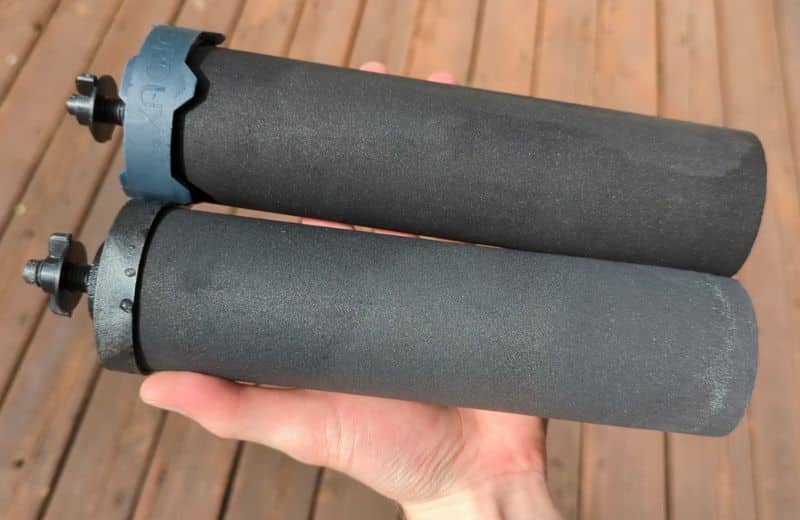
What Does It Remove?
A standard activated carbon filter can remove:
- Chlorine
- Taste and odor
- Pesticides and herbicides
- Some VOCs
- Some disinfection byproducts
- Microplastics
- PFAs
- Pharmaceuticals
- Phosphate, and lithium
Catalytic carbon filters have an advanced filtration ability – as well as reducing the unpleasant taste and odor of chlorine, they also remove:
- Chloramines
- Hydrogen sulfide
Where Is It Installed?
Activated carbon filters can be installed in both point-of-use (POU) and point-of-entry (POE applications), including under-sink water filters, faucet filters, refrigerator water filters, whole house water filters, water filter pitchers, inline filters, and water dispenser filters.
Affordability
Activated carbon filters are the most affordable and widely available filters available today.
👉 See Our List & Reviews of the Most Effective Water Filters in 2024
Reverse Osmosis Filter
What Is It?
A reverse osmosis water filter system combines multiple filtration stages to reduce almost all total dissolved solids (TDS) from water. A water filtration system can only be classed as a reverse osmosis system if one of its filter stages is a semipermeable membrane.
Alongside this filter membrane, most reverse osmosis filters use a sediment filter, a carbon water filter, and a polishing filter (mentioned later). Some RO filtration systems also use a final-stage mineral filter (also mentioned later).
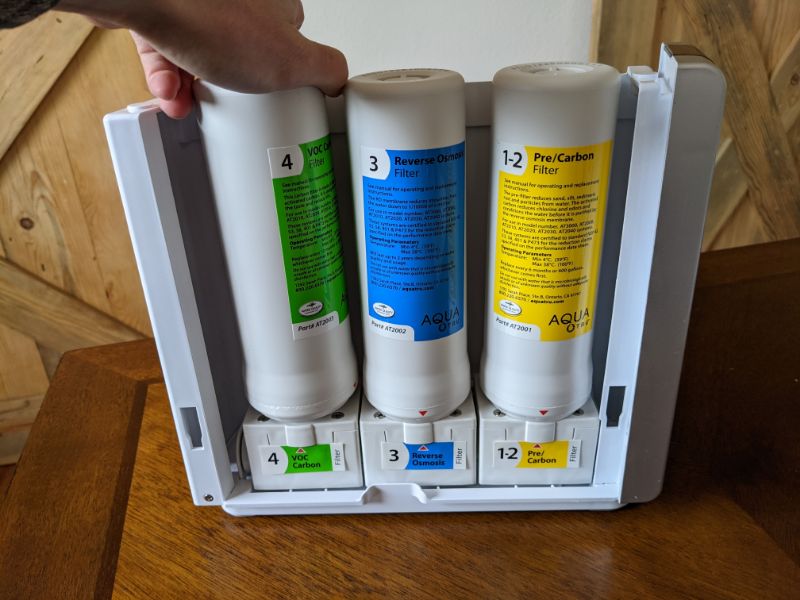
What Does It Remove?
Reverse osmosis water filter systems remove virtually everything from water, including:
- Metals
- Chemicals
- Microorganisms
- Minerals
- Salts
- …and other organic and inorganic impurities.
There are only a few contaminants that reverse osmosis CAN’T remove, including some disinfection byproducts, some microorganisms, and some dissolved gases.
Where Is It Installed?
Reverse osmosis water filtration systems are most commonly installed as POU systems. Under-sink and countertop units are widely available. Some manufacturers sell POE reverse osmosis filters for whole home use, but these are less popular due to their expensive upfront cost and their excessive water waste.
Affordability
Reverse osmosis is one of the most expensive water filtration processes available today. An under-sink or countertop system costs $300-$800 on average, and whole-home systems often cost beyond $3,000.
See our reviews of the most efficient RO systems from trusted brands 👈
Water Distiller
What Is It?
A water distiller is a countertop unit that purifies water through the process of boiling, evaporation, and condensation. Inside a distiller, water is boiled until it evaporates. The steam travels along a cooling corridor, and evaporates back into water, where it drips into a separate container. The impurities that are unable to evaporate and condense with water are removed.
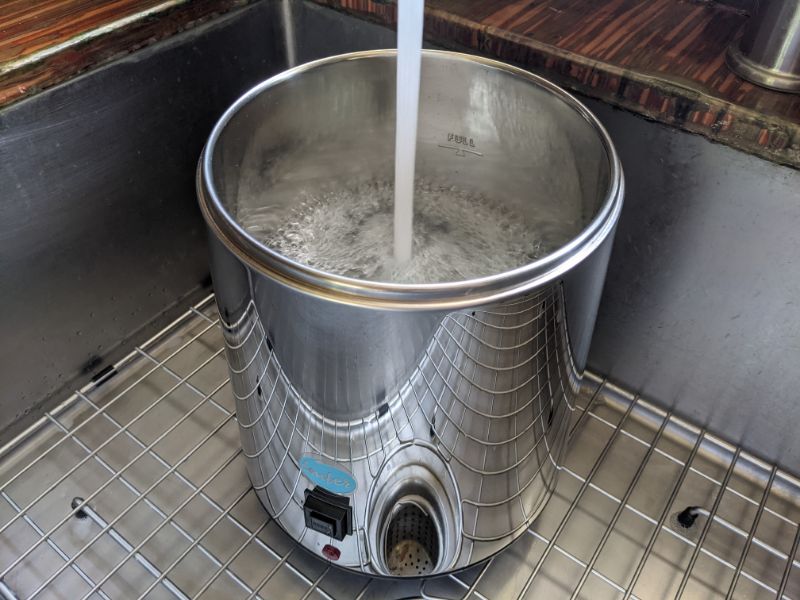
What Does It Remove?
The majority of contaminants are removed by a water distiller. Distillation produces pure water that’s free from:
- Salts
- Minerals
- Most chemicals
- Dangerous heavy metals
Only a few impurities with a high vapor pressure (like mercury and some chemicals) may remain in water that has been distilled.
Where Is It Installed?
A water distiller is installed as a POU unit, typically on a kitchen countertop. Distillers are powered by electricity, so you’ll need to set up the system near a power outlet.
Affordability
Distillers are a low-to-mid-priced water filtration solution. Some water distillers cost as little as $100, but the average price range is $200-$750.
👉 Read our review of the most capable water distillation machines
Ion Exchange Filter
What Is It?
An ion exchange filter uses a special kind of resin to exchange charged ions in a water supply. Often, this involves replacing the problematic ionic substance with an innocuous substance. Ion exchange may be used in a water filter or another form of water treatment, like a water softener.
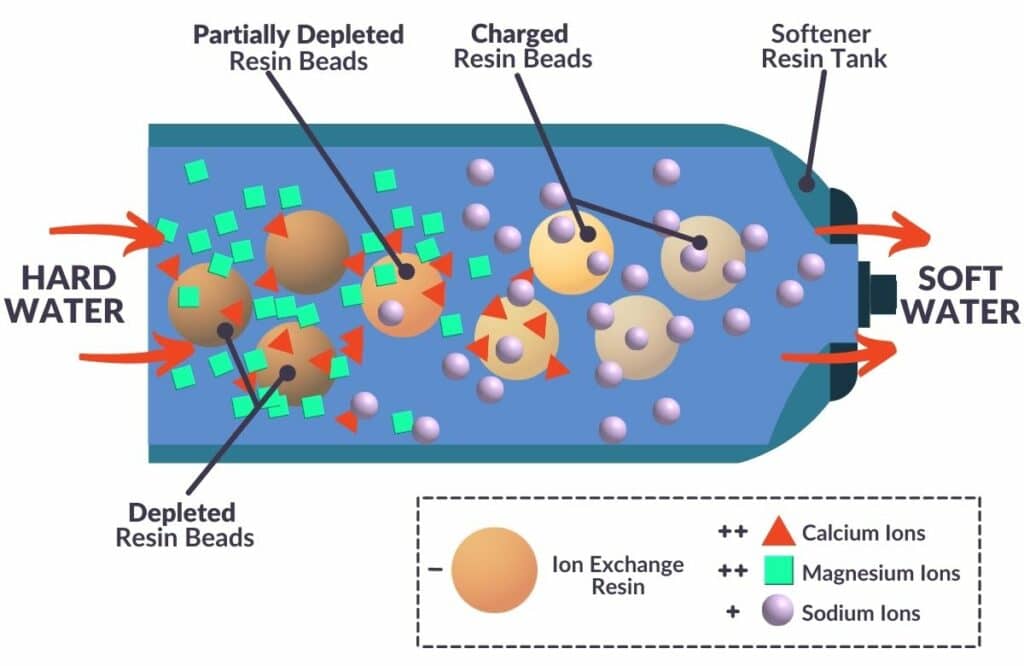
What Does It Remove?
Depending on the resin setup, ion exchange may be used to reduce:
- Nitrates
- Arsenic
- Chloride
- Sodium
- Sulfate
- Copper
- Nickel
- Zinc
- …and other minerals, heavy metals, and organics
Where Is It Installed?
Ion exchange filters may be found alongside carbon and KDF filtration in POU filters, like water filter pitchers. The best example of larger-scale ion exchange is a water softener, which is installed as a POE system upstream of your water heater.
Affordability
The cost of an ion exchange filter depends on the filter’s size and application. When used in a small cartridge filter (such as a pitcher filter), ion exchange resin is low-cost. In a reverse osmosis system, much more resin is needed, and the average cost of the entire system is $800-$1,600.
Ceramic Filter
What Is It?
A ceramic filter is one of the oldest types of filtered water cartridges available today. Ceramic filters have a pore size of 0.3 to 50 microns and use a plastic or ceramic receptacle to trap a whole host of impurities.
📌 There are two common types of ceramic filters: ceramic candle filters, which are about 7-10 inches long, and ceramic dome filters, which are much smaller and more compact.
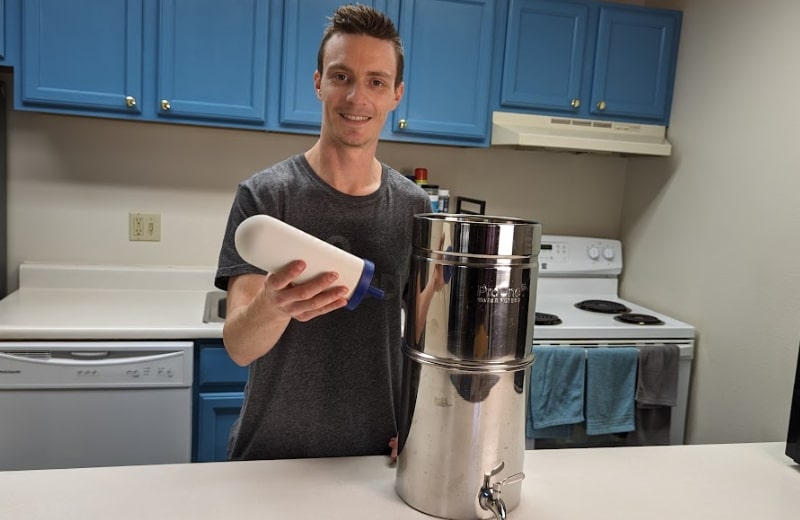
What Does It Remove?
A ceramic filter removes:
- Sediment
- Turbidity
- Suspended solids
Ceramic filters with small pores can remove bacteria, protozoans, cysts, and some viruses.
Where Is It Installed?
Ceramic filters may be used as standalone filters or combined with carbon water filter media in a variety of POU filtration systems, including water filter pitchers, countertop drinking water systems, portable filters, and under-sink filter systems.
Affordability
Ceramic filters are another affordable water filtration method, costing less than $100 upfront for a POU filter.
Learn the most effective ceramic filters in 2024 👈
Polishing Filter
What Is It?
A polishing filter is often used in a multi-stage filtration system, especially in RO water filters. This filter is used to “polish” water by removing lingering contaminants affecting taste and odor. For this reason, the filter is usually made from carbon.
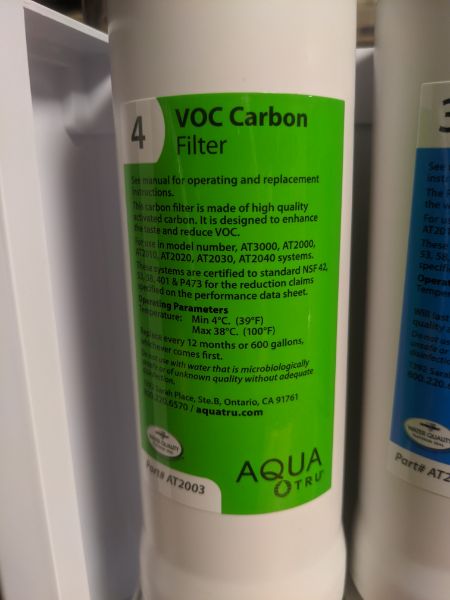
What Does It Remove?
A polishing filter removes the remaining chlorine taste and odor from drinking water.
Where Is It Installed?
Polishing filters are installed after the semipermeable membrane in an RO system. They’re usually found in under-sink and countertop filtration systems.
Affordability
Polishing filters are usually sold as part of a complete filtration system. Replacement POU polishing filters cost about $30-$50 per filter, while larger polishing filters for whole home systems cost $70-$100 per filter, depending on the filter size and the exact media used.
Mineral Filter
What Is It?
RO filtration systems offer such a thorough contaminant removal that they remove even the good stuff, including beneficial minerals. A mineral filter is sometimes used as the final stage of an RO water filtration system to add a healthy dose of minerals back into water.
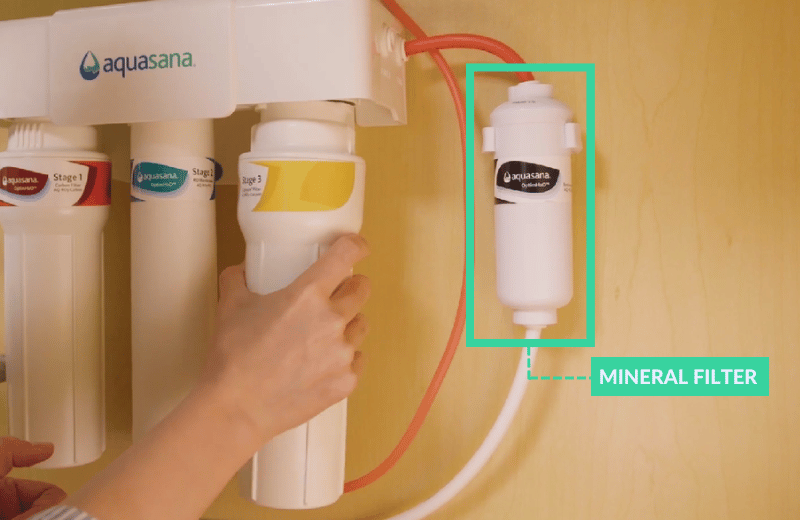
What Does It Remove?
Mineral filters don’t remove anything from water. Instead, they introduce healthy minerals like calcium, magnesium, and potassium to a drinking water supply, improving its taste and boosting its alkalinity.
Where Is It Installed?
A mineral filter is installed at the end of an under-sink or countertop RO filtration system. Some water pitcher filters also contain mineralizing media, like mineral beads, to improve the taste and quality of filtered water.
Affordability
On their own, POU mineral filters usually cost $50-$100. But since they’re usually purchased as an add-on to an RO system, they can add to the overall expense of your purchase. Mineralizing pitcher filters are more affordable, typically costing $25-$50 per filter.
KDF Filter
What Is It?
KDF, or kinetic degradation fluxion, filters use a high-purity copper-zinc media that produces an oxidation/reduction redox reaction to transfer electrons between molecules, forming new elements and reducing common impurities in water.
There are several types of KDF filters, each removing a different set of contaminants. Learn more about the types of KDF media here.
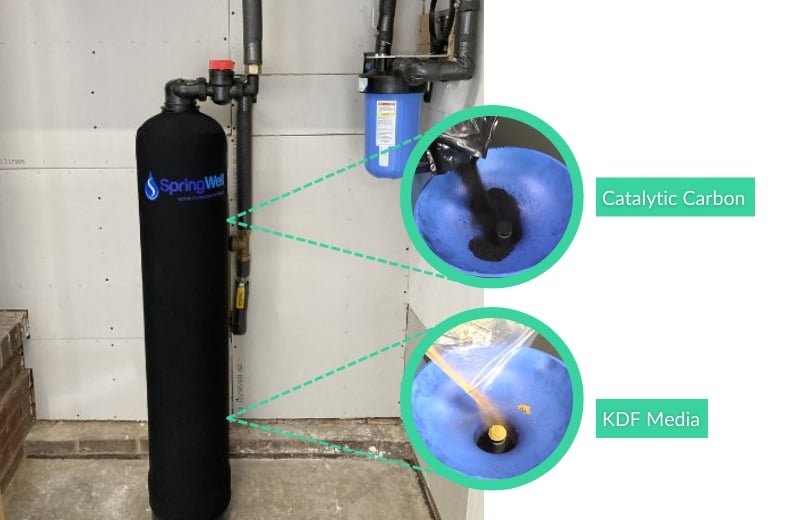
What Does It Remove?
KDF 55 targets:
- Chlorine
- Soluble heavy metals
KDF-F fine mesh water filters reduce:
- Iron
- Hydrogen sulfide
KDF-C coarse mesh targets chlorine.
Where Is It Installed?
KDF filters are installed in numerous locations, and they’re often paired with carbon filters to complement the carbon’s adsorption abilities and further reduce chlorine taste and remove chemicals. You may find KDF media in refrigerator filters, shower filters, under-sink filters, and whole home water filters.
Affordability
KDF is an affordable filter media, costing less than $50 for a small POU filter and less than $100 for a large whole home filter cartridge.
Activated Alumina Filter
What Is It?
Activated alumina is a highly adsorptive media that pulls contaminants out of water. It binds with toxic contaminants, preventing them from leaking back into your water.
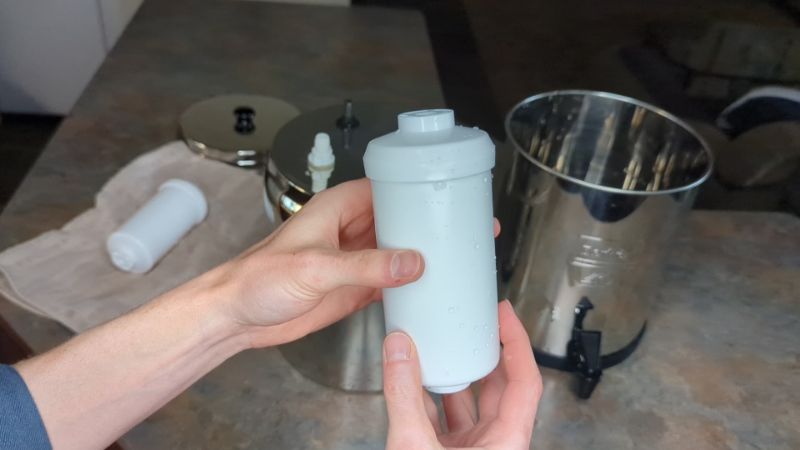
What Does It Remove?
In a water filter, activated alumina is commonly used for removing contaminants like:
- Fluoride
- Arsenic
- Selenium
Where Is It Installed?
Activated alumina can do what many filters can’t: reduce fluoride. For this reason, it’s often paired with other filter media, like carbon and KDF filters, for more effective contaminant removal and to achieve a greater difference between filtered and unfiltered water.
Affordability
You can buy a high-quality activated alumina filter for less than $100. Activated alumina is often paired with other filter types, bringing up the upfront cost.
Sediment Filter
What Is It?
A sediment filter has a pore size of 5-50 microns and is used to trap large particles of sediment in drinking water. There are various types of sediment filters, including cartridge sediment filters and spin-down sediment filters.
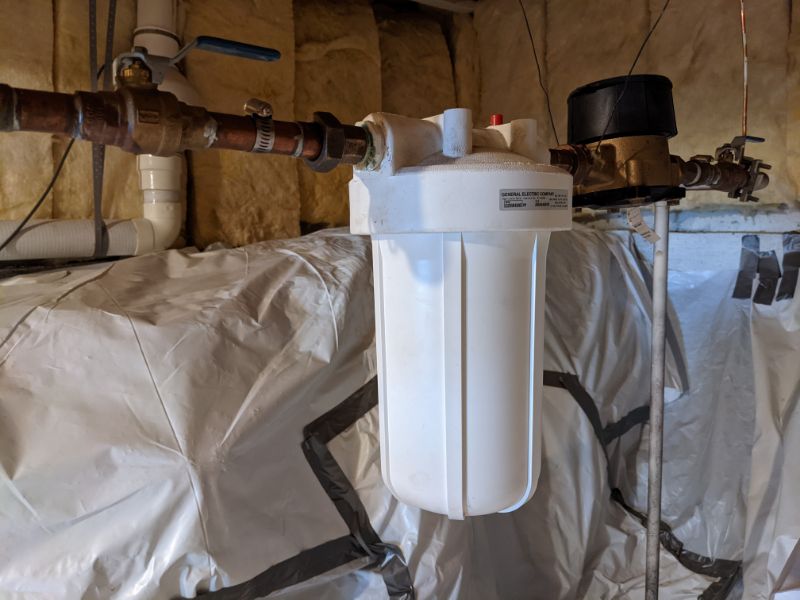
What Does It Remove?
The sediment filtration process is used to remove contaminants that are large enough to be seen by the human eye, like:
- Sand
- Silt
- Dirt
- Rust
- Dust
- Soil
- Gravel
Where Is It Installed?
A sediment filter may be used for standalone water treatment or to protect the filters in a large under-sink or whole-house water filter system. Sediment filtration is most effective as a POE solution because this protects your plumbing, pipes, and appliances from sediment damage.
Affordability
Sediment filtration is an affordable process. The average whole-home sediment filter costs $50-$200, and POU sediment filters are usually included in the cost of a multi-stage filtration system.
Check out the best sediment filters for various applications👈

